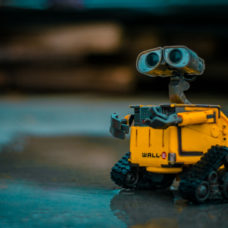Otoy and Unity announced their collaboration to integrate Octane rendering within the Unity timeline. This enables the import of a wide variety of objects and effects into scenes that can be rendered right away, and with photorealistic quality.
Otoy, a cloud-based computer graphics company, is primarily known for its Octane Renderer, which is the first real-time 3D modeling software dedicated to the creation of photorealistic, cinematic renderings. Introduced in 2012, the Octane Renderer became a must-have tool in the arsenal of filmmakers in cinema and TV.
#Otoy has collaborated with #Unity - #photorealistic #VR around the corner!Click To TweetOctane Renderer: What Pros use Across Entertainment
After making its renderer compatible with many scripts and plug-ins geared towards VFX and animation artists, Otoy turned to the gaming world. In a keynote speech, Jules Urbach, Otoy’s CEO, announced the partnership of Otoy and Unity to integrate the Octane Render with Unity’s EditorVR, presenting it as an important step ahead for the future of VR. With a full version of Octane Renderer made available for free, Unity users will be able to create offline renderings and enhance the real-time processing for VR content, game cutscenes, 360 videos and more.
In general, the integration of cutting-edge tool like the Octane Renderer promises stunning gains in VR performance and productivity. Path tracing techniques respect the physical properties of light, which gives the renderings much better quality than applications using CPU ray tracing technique. Also, Octane’s Direct Lighting mode allows for quasi-real-time animation rendering.
Are we That Close to Photorealism in VR?
To have a “real” photorealistic digital content that immerses us completely in VR experiences, VR still needs both hardware and software with a highly improved level of detail and interactivity.
In the entertainment industry, CPU-based 3D solutions are time-consuming and costly, thus their use remains limited. For example, James Cameron could afford using these techniques for his ambitious and disruptive Avatar, the highest-grossing film ever made. Further development and deployment of GPU-based tools like the Octane Renderer would iron out many of the kinks in the road towards photorealism in VR.
The human eye is said to have a resolution of 576 MP, recognizing different sizes and types of “pixels,” with the retina’s over 100 million photoreceptors. In other words, there’s still a very long way to go before we recognize absolute photorealism in VR. But don’t fear! We’ve come a long way since Pong.













Comments (0)
Most Recent